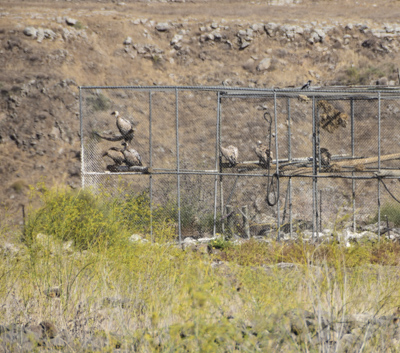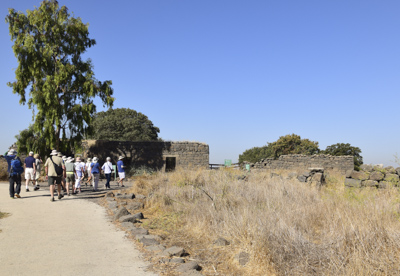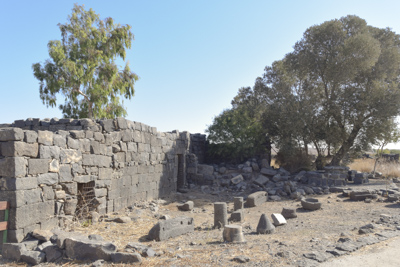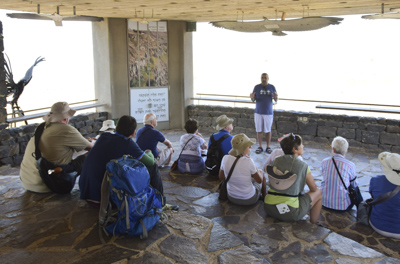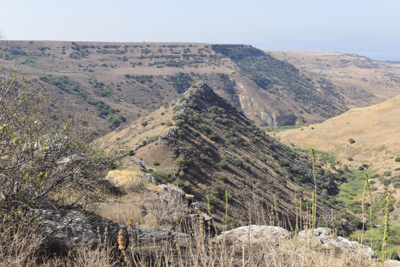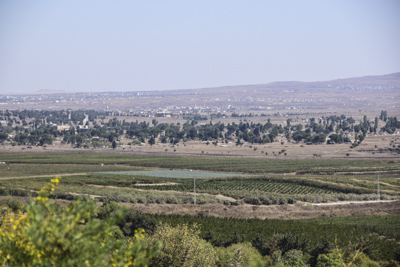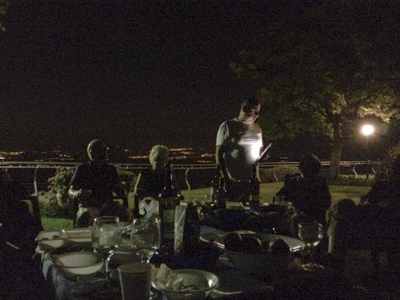Saturday – October 7, 2017
It was a cool sunny morning on the top of the Golan Heights at Kibbutz Kfar Haruv. We got an early start and ate breakfast in the Kibbutz’s cafeteria.
My OAT tour group and I boarded the bus and we drove to Gamla Nature Preserve, which is an Israeli national park. On the way, we stopped to look at rock formations called dolmens, which are Bronze Age burial mounds made of huge boulders dating from 4000 to 3000 BC. The Gamla Nature Reserve has a field containing about 700 dolmens.
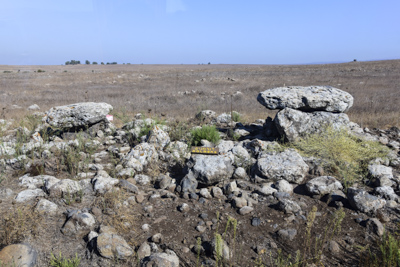
Gamla is famous for its griffon vulture observation point and its efforts to keep the birds of prey from extinction. The nature preserve is home to the largest nesting colony of raptors in Israel.
There are hiking trails throughout the park as well as ruins of a Christian Byzantine village dating from the 4th – 5th centuries.
Rafi, our tour leader, led us out to the observation point which looks out over the cliffs of Gamla Stream Canyon and a nesting colony of vultures.
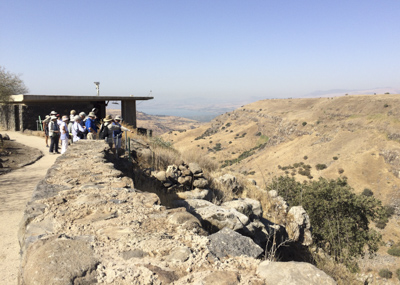
Gamla is also the location of an ancient Jewish city on the Golan Heights about 81 BC. Archaeological finds confirm that Gamla had been a fortified settlement during the early Bronze Age – 2700 BC. Gamla was the capital of the Golan district during the Second Temple period and the inhabitants supported themselves through agriculture.
The historian, Josephus, described the shape of the hilltop village, “like a camel.” There were three major rebellions by the Jews against the Roman empire between 66 – 136 AD. Gamble became an important stronghold for rebels and because of this, Gamla is a symbol of heroism for the modern state of Israel.
Back on our bus, we continued to drive north toward the Syrian border and stopped at an overlook. There were five young Israeli military men posted at the site. We spoke to them briefly and they said they were newly inducted into the army just two months ago. All Israeli citizens over the age of 18 have mandatory military duty; men for 3 years and women for 2 years. They looked very young!
Today the Golan Heights is used as training grounds for the Israeli military as well as an army base. We passed yellow flags in the ground which mark land mines left over from the 1967 war. However, there are also large tracts of land which have been developed for vineyards and cattle ranches.
We continued to the Druze village of Majdal Shams which is built on a high hill and located near the Syrian border.
We had a fantastic feast for lunch at a family owned restaurant called Al Yasmeen. I used the “Here” app on my phone to tell me where we were.
The owner’s 25 year old son, Mashti, explained that the Druze faith is an Arab speaking religion which is separate from the Muslim religion. They have a distinct theology and also believe in reincarnation. Druze people live primarily in Lebanon, Syria, and Israel.
We stopped at a local supermarket in the village of Majdal Shams before returning to our cabins at the Kibbutz. We purchased some food to share later tonight for a communal picnic.
On the way back to the Kibbutz, we stopped at a rest stop which had four military tanks of display. Rafi told us about his military service and we looked at the tanks.
Later in the evening, we had a lovely time on the promenade of the Kibbutz overlooking the valley. As the sun set, we shared our breakfast leftovers and purchased snacks. It was an excellent way to end a very busy day exploring northern Israel.

